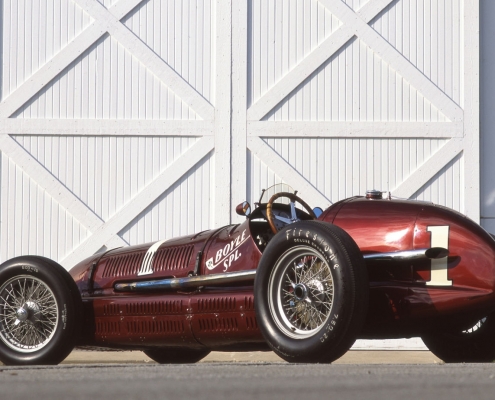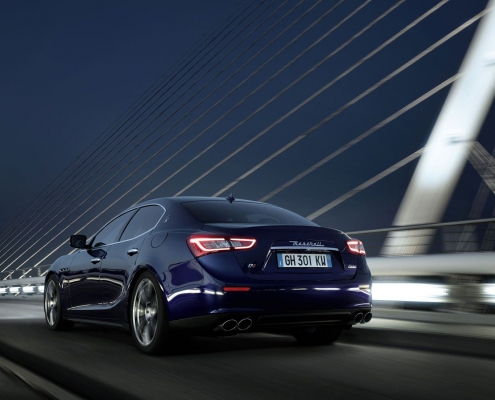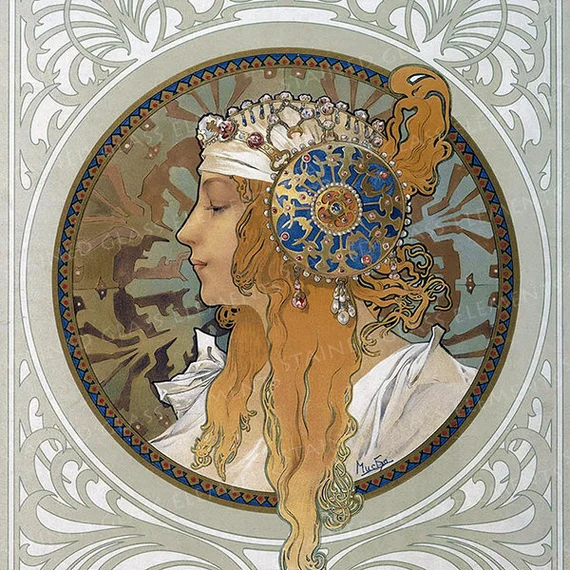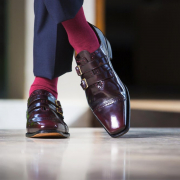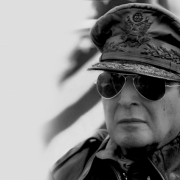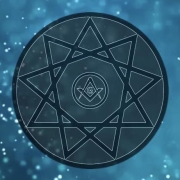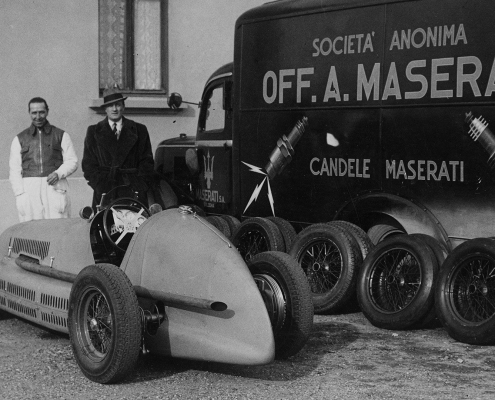
The Maserati story begins with a railway worker named Rodolfo Maserati, his wife Carolina Losi and their seven children. The Maserati brand was founded in 1914 in Bologna by the six Maserati brothers: Carlo, Bindo, Alfieri, Mario, Ettore and Ernesto. It initially manufactured spark plugs and ignition coils. In 1926, the first self-built racing car (Tipo 26) was presented at the Targa Florio, driven by Alfieri Maserati, who promptly won. After that, he also won numerous races. From then until the 1950s, the company concentrated on building racing cars, the most famous types being the 250 F and the "Birdcage", which were extremely successful.
At the end of the 1950s, it was realised that the factory could not make a living out of racing, and it was decided to start building street cars as well. The first type to be produced in quite a large series (almost 2000 units) was the 3500 GTS from 1957. During the sixties and seventies, the marque built a reputation for producing exclusive GTs with sounding names such as the Mexico, Ghibli, Indy, Bora, Merak, Khamsin, Kyalami and Quattroporte, all of which were fast touring cars produced in small numbers. In 1968 Citroën took over Maserati, which led to the cars in which Citroën's hydraulic technology could be found.
In the mid-1970s, the factory was on the brink of collapse when Citroën wanted to pull the plug on the loss-making business. De Tomaso took over the business in 1975 for a symbolic sum. He decided that the only way to survive was to develop a car that was accessible to a larger public. Thus, in 1982, the Biturbo was presented, which struck like a bomb. By equipping a relatively small engine with two turbos, a very fast car was presented that could easily take on the BMW 323i, its biggest rival.
After that, the model was constantly improved. The last incarnation of the biturbo was the Ghibli II. Then the factory was placed under the management of Ferrari and the company was totally reorganised and rebuilt. The first model under the new regime was the 3200 GT, which still had an 8 cylinder biturbo engine. After that, the company switched to conventional engines without turbochargers, which can be found in the current models. Recently, Maserati was added to Alfa Romeo within the Fiat group, and was therefore taken away from Ferrari.
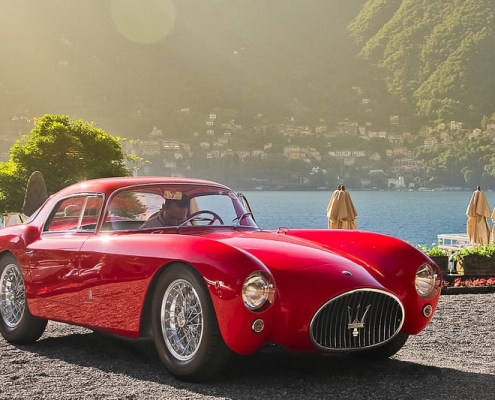
The idea behind Maserati production is gracefully simple; Maserati is the product of family traditions and reflects the passion of three brothers for fine cars and racing. As a result, Maserati has become a synonym for fast, stylish, sporty vehicles and the spirited lifestyle that goes with them. Maserati is the favourite brand of athletes, celebrities, singers and lovers of luxury style from all over the world.
Maserati cars are super-powerful because of their 16-cylinder engines, which not only results in a fast engine, but also makes the car a great competitor to other sporty brands such as Mercedes, Ferrari and even McLaren. The latest development, the Maserati Alfieri concept car, is named after its legendary founder.
The history behind the brand
The Maserati logo was designed by Mario, one of the Maserati sons, who put time and effort into making it a unique symbol. The Maserati logo is intended to represent the ideas with which the luxury car dealer is associated: power, style, luxury and resilience. The Maserati symbol, which mimics the beautiful (and famous) fountain of Neptune in Piazza Maggiore in Bologna, is now ubiquitous around the world as a synonym for luxury and class in the automotive industry. Neptune is considered the Greek god of the sea and also a "god of horses". The symbolic logo is also intended to provide insight into the "what's all about" theme of the Maserati.
What the Maserati brothers have in common is a common passion for racing.
They eventually created their own model that graced the catwalks, competing with major existing brands and winning car races around the world. Eventually, the brothers decided to cancel their participation in car races.
Maserati's headquarters, meanwhile, moved from picturesque Bologna to the more industrial Modena, also historically known as a producer of sporty and stylish Italian cars, and one of the centres of Italy's booming car industry.
The production history of Maserati has not been smooth over the years. It stopped during the Second World War. A tragic accident in the 1950s also affected the fate of the Maserati. The accident involved a sporty Ferrari car that flew into the crowd due to a loss of control by the driver and caused several deaths among the car racing observers. After the tragic accident, Maserati decided to cancel its participation in motor races.
Maserati was the favourite choice of many celebrities, such as the Shah of Persia Reza Rahlavi who requested the integration of a sports engine into the chassis of the original Maserati 3500 GT.
The final result was the beautiful Maserati 5000 GT, with only 33 such models available to a few very select owners.
More than a century of battling earth, brick, concrete and more helped Maserati stake a claim in the history of racing. The Trident that graces Maserati cars far and wide was the brainchild of Mario Maserati. He was the only Maserati brother without any interest in cars. Instead, he preferred life as an artist, so his brothers gave him the commission. Ironically, Mario's artwork became one of the most recognised symbols of the Maserati brand.
In 1922, 10 years before his untimely death, Alfieri took his redesigned Diatto to the Susa-Moncenisio race. He reached speeds of 69 km/h and scored a major victory. Shortly afterwards, he scored another victory in the Aosta-Gran San Bernardo race.
The brothers completed their first car in 1926 and set a new world record in Class C in 1929 when Baconin Borzacchini's 16-cylinder V4 drove almost 245 km/h. It was a record that lasted until 1937.
Wilbur Shaw took over the wheel of the "Boyle Special" 8 CTF and won the Indianapolis 500 in 1939 with an average speed of just over 345 km/h. A year later, in 1940, he repeated his title.
Maserati participated in Formula 1 races in the 1940s, 1950s and 1960s and scored 9 Grand Prix victories for his factory team.
Maserati-Ferrari rivalry.
Modena is known as the city of supercars and interestingly enough, both Maserati and Ferrari are currently based here. Back in the day, the rivalry between Maserati and Ferrari started when Maserati moved from Bologna to Modena. There was fierce competition between these two car manufacturers, which spread from the factories to the race track and even to local entertainment venues and workers' homes. People who worked at Maserati and Ferrari never saw each other, and this rivalry reached its peak in 1978 when Enzo Ferrari refused to welcome the then President of Italy Sandro Pertini to his factory on a tour of Modena. The simple reason for this was that Pertini drove a Maserati! Nevertheless, there is currently no real rivalry between the two companies, as they are both owned by the Fiat Group.
Maserati as a celebrity choice
Among the exclusive list of Maserati owners is the famous talk show host Jay Leno, who has included a light blue lacquered Maserati model from 1962 in his intriguing collection of luxury car models.
Other celebrities who drive a Maserati model are Bradley Cooper with his Grand Turismo Maserati and Gwyneth Paltrow, with her Maserati Quattro Porte.
Maserati is one of the most important symbols of modern motor racing. It is a status symbol, a power symbol and an indicator of spirited life at the same time.
Maserati was once known as the Gangster's Car, one of the car possessions of the Soprano's underground characters, Johnny Sacrimoni and Christopher Moltisanti, and it is also used in well-known films with a 'gangster' theme, such as Scarface, which features the Miami, and Godfather III.
Maserati does not want its history to be associated with the tastes of dictators, but it is interesting to note that one of its fans is Benito Mussolini, who wanted his own V16 city car to be produced long before Hitler received his Ferry Porsche. However, the plan did not come to fruition. What makes Maserati a unique brand is its rich history. With ups and downs, the brand has found its way into the world of luxury and become a favourite among film producers, Hollywood figures and politicians around the world. The Maserati image of luxury has been consolidated with the elegant luxury theme behind it, the high price tags, the possibility of customisation and the aerodynamic design.
Owning a Maserati makes a person stand out, as the brand is a symbol of luxury tastes and also competes with other posh brands, such as Ferrari and Alfa Romeo.
Maserati has become a leader in the world of automobile fashion, with its uniquely elegant designs and distinctive lines. Initially the designs were very personal, round and circular, but over the years they have become longer and larger. Some Maserati models have outstanding vision, including the famous GranTurismo that impressed at the Geneva Motor Shaw in 2007.
With its world-class charm and incredible shape and design, Maserati has become a leader in the production of fine sports cars. It is competing with mainstream sports car brands and has established itself as one of the leaders in the competitive car market.
Thierry Stravers is co-owner of Masonic Store.
He likes to combine his passion for style and elegance with his Masonic activities.
Thierry is the owner of Trenicaa marketing agency and is a board member of Loge Enlightenment No.313 O: Hoofddorp.

